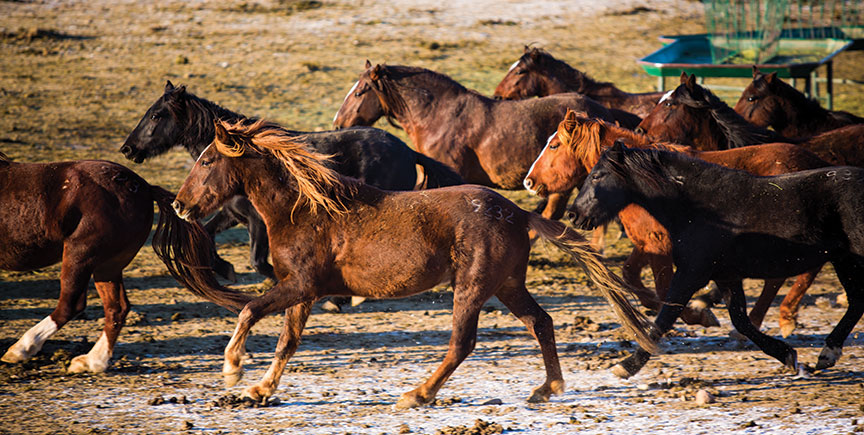
18 Dec Oh, Give Me A Home
Crest the last hill around 20 miles due north of Reno on Pyramid Highway and you’ll see it. The Bureau of Land Management (BLM) National Wild Horse and Burro Center at Palomino Valley (PVC) is a large expanse that sweeps across the floor of beautiful Palomino Valley, rimmed in sagebrush and velvety purple mountains gently dusted with snow.
The facility can house up to 1,850 wild horses and burros (right now it has 1,325) gathered from the western ranges. These animals are fed and cared for by the federal government as they are tamed and readied for adoption. For a fee of $125, anyone who can provide food, shelter, veterinary care, enough space and the right type of fencing can adopt one of these animals.
Last year, 2,600 horses and burros were adopted nationwide through in-person, satellite and bidding adoptions as well as prison training programs. The Mustang Heritage Foundation also partners with BLM to put on adoption events and competitions—for instance, giving 100 horses to 100 trainers for 100 days, after which the horses are available for adoption.
The Palomino Valley facility is open five days a week for adoption, as well as the first Saturday of each month and other Saturdays by appointment.
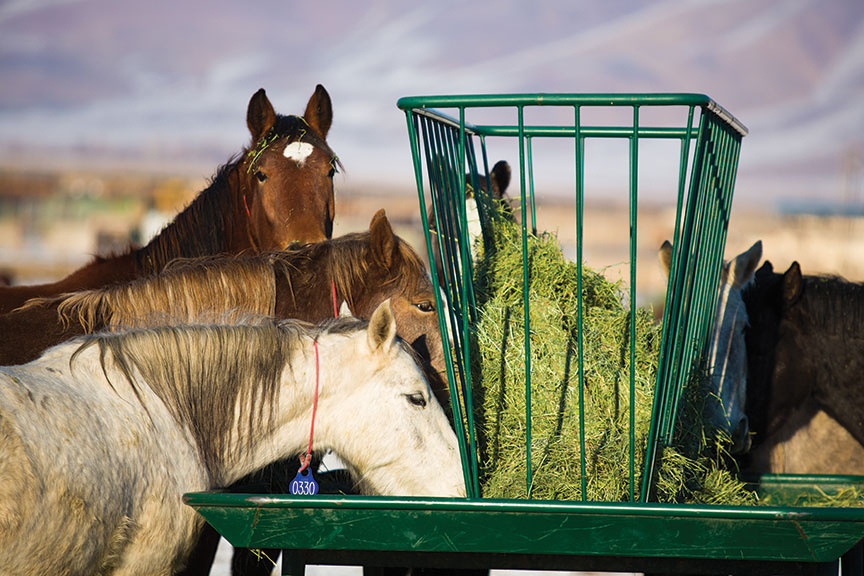
Horses eat from one of many feeders in the PVC pastures. When animals first arrive off the range, their bodies are thinner and stomachs more used to simple meadow grass hay, so the staff at the PVC carefully weans their fragile digestive systems onto alfalfa, which has more protein and nutritional value, is more readily available in large quantities and requires less tonnage than meadow grass to feed the herd.

Upon entering the facility, each new batch of horses and burros is examined, vaccinated and freeze branded. The first symbol in the lineup is that of the U.S. government and indicates that the animal is federal property. The rest of the markings are numerical indications of the year the animal was born (often determined by its teeth), the state in which the animal was branded and a four-digit identification number the animal is given that is matched to a blue tag around its neck.
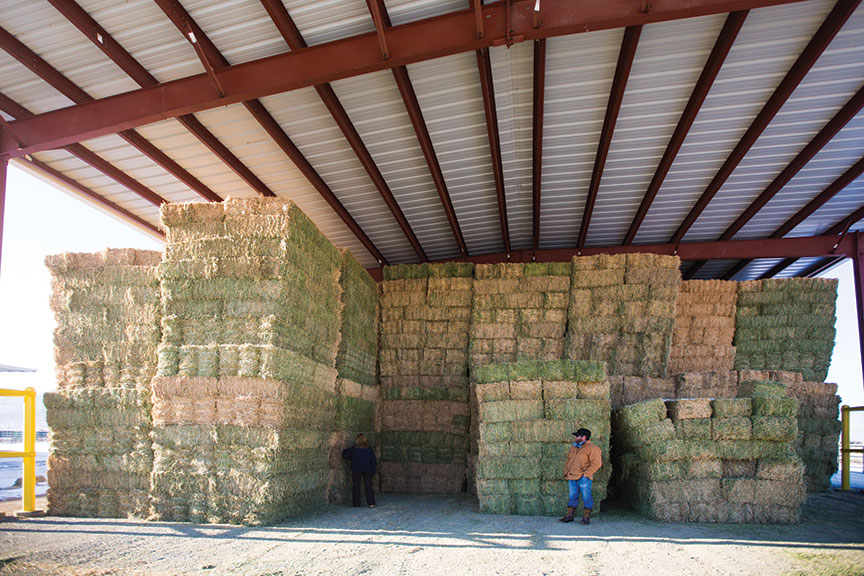
Horse wrangler Dusty Capurro stands next to a store of hay for scale. Because the horses eat around one ton of alfalfa per hundred horses per day, the facility keeps between 500 to 2,000 tons of hay on-site at any given time.
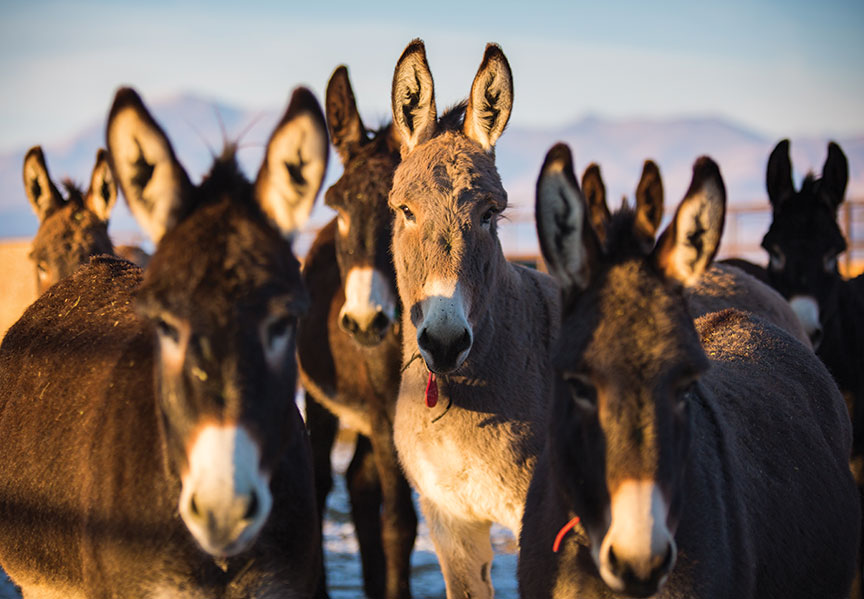
In addition to the horses, PVC is home to 50 to 65 adoptable burros, which come largely from the Colorado River area of California and Arizona. Popular as pets and also for protection animals, burros will bond with a flock of sheep or goats and defend them from coyotes, dogs and other harm.
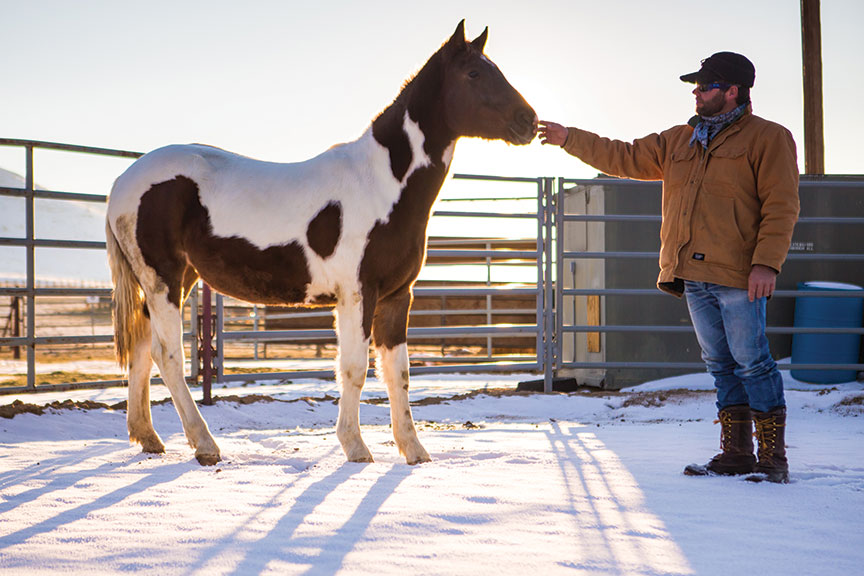
Horse wrangler Dusty Capurro works with a wild horse. Part of the taming process for these animals is daily exposure to humans, a little bit at a time.
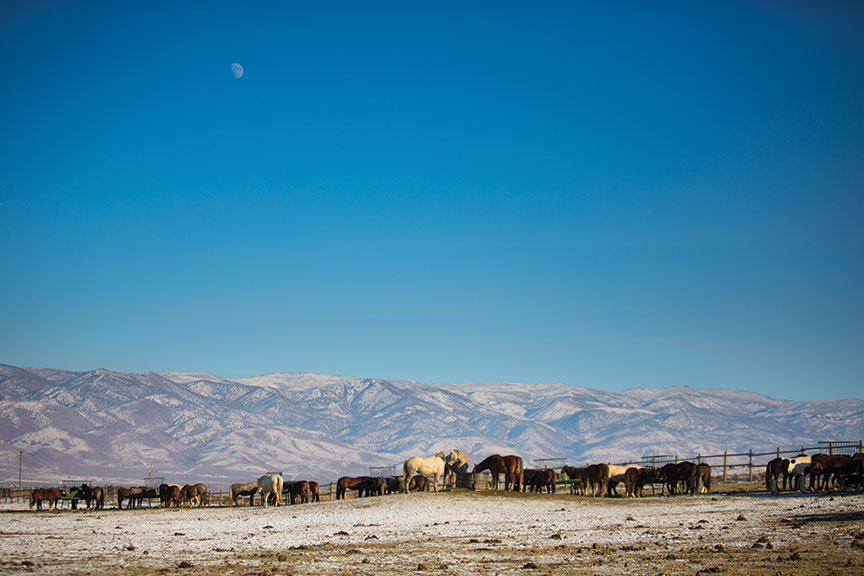
Horses feed and water themselves in one of many sun-soaked pastures at the PVC. As they wait patiently for adoption, they are at home on this comfortable range. And the skies are not cloudy all day.




No Comments